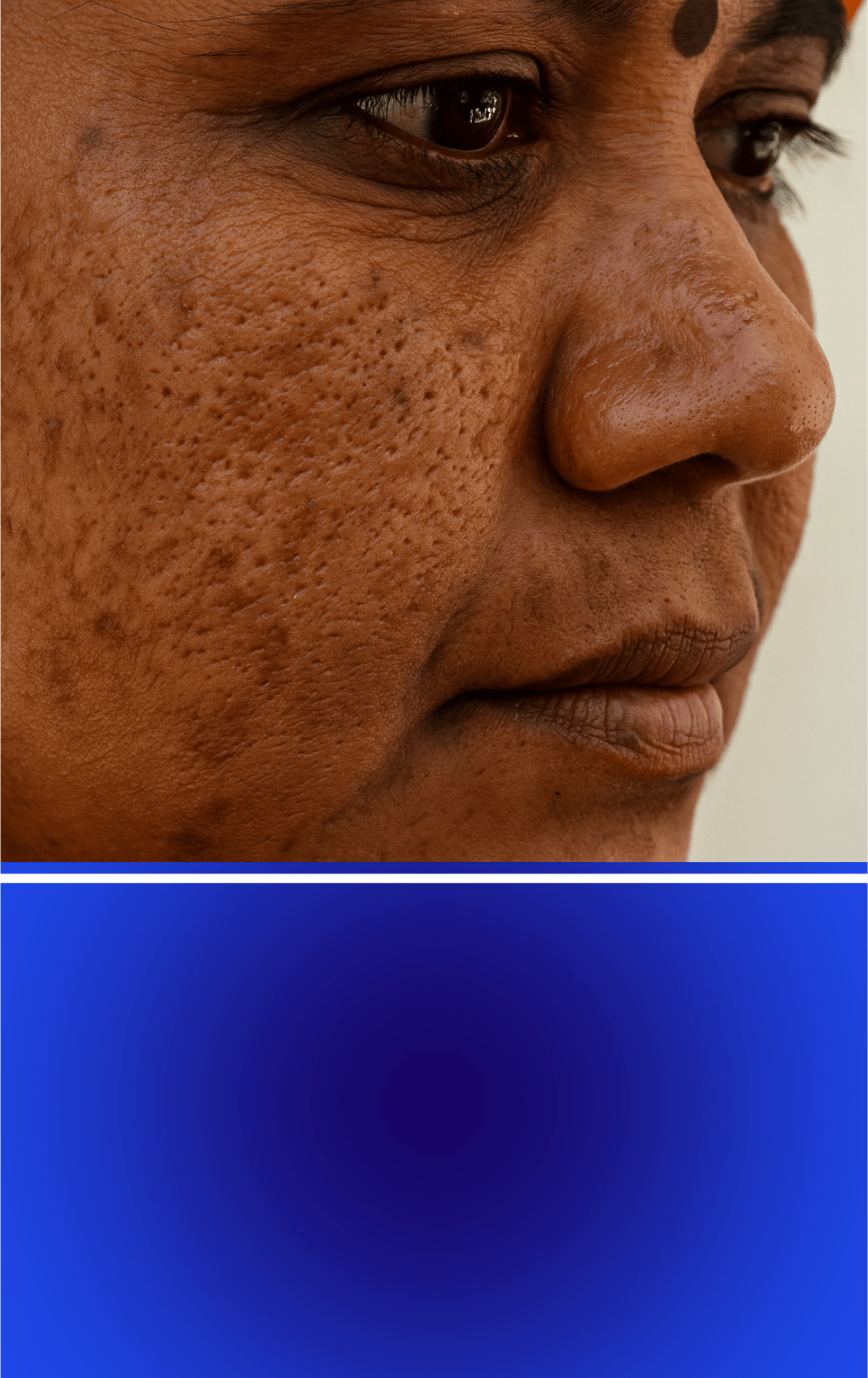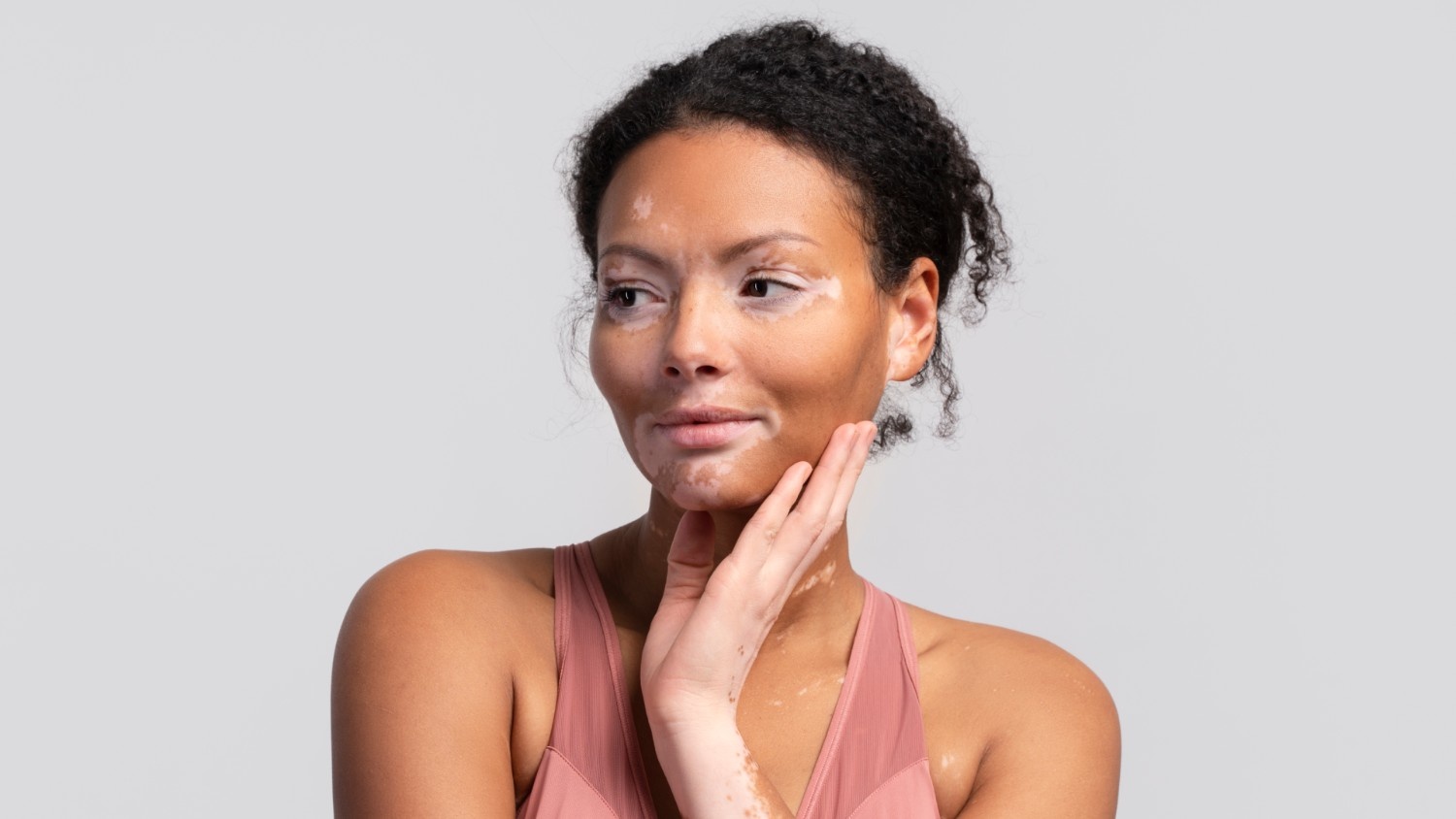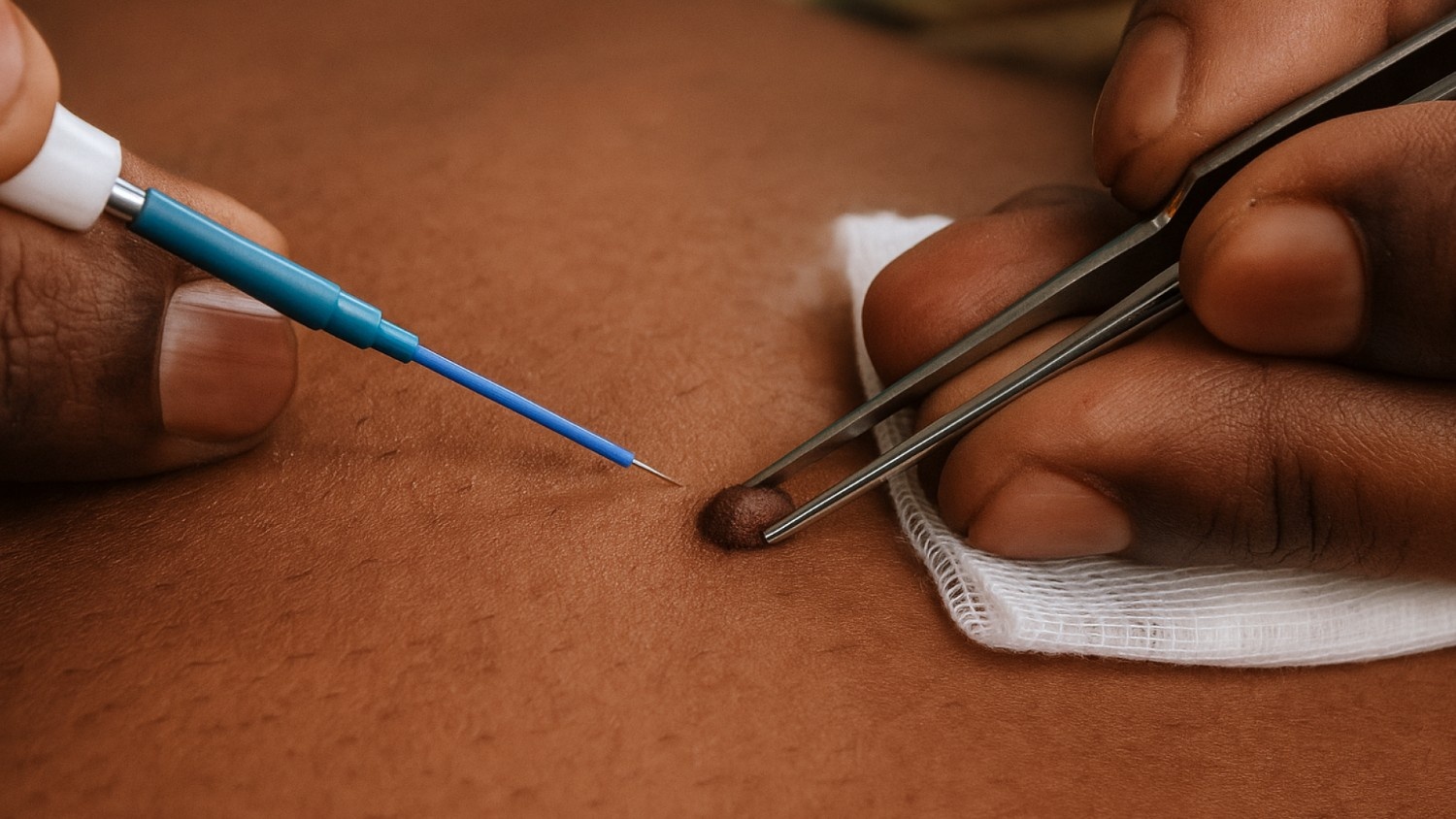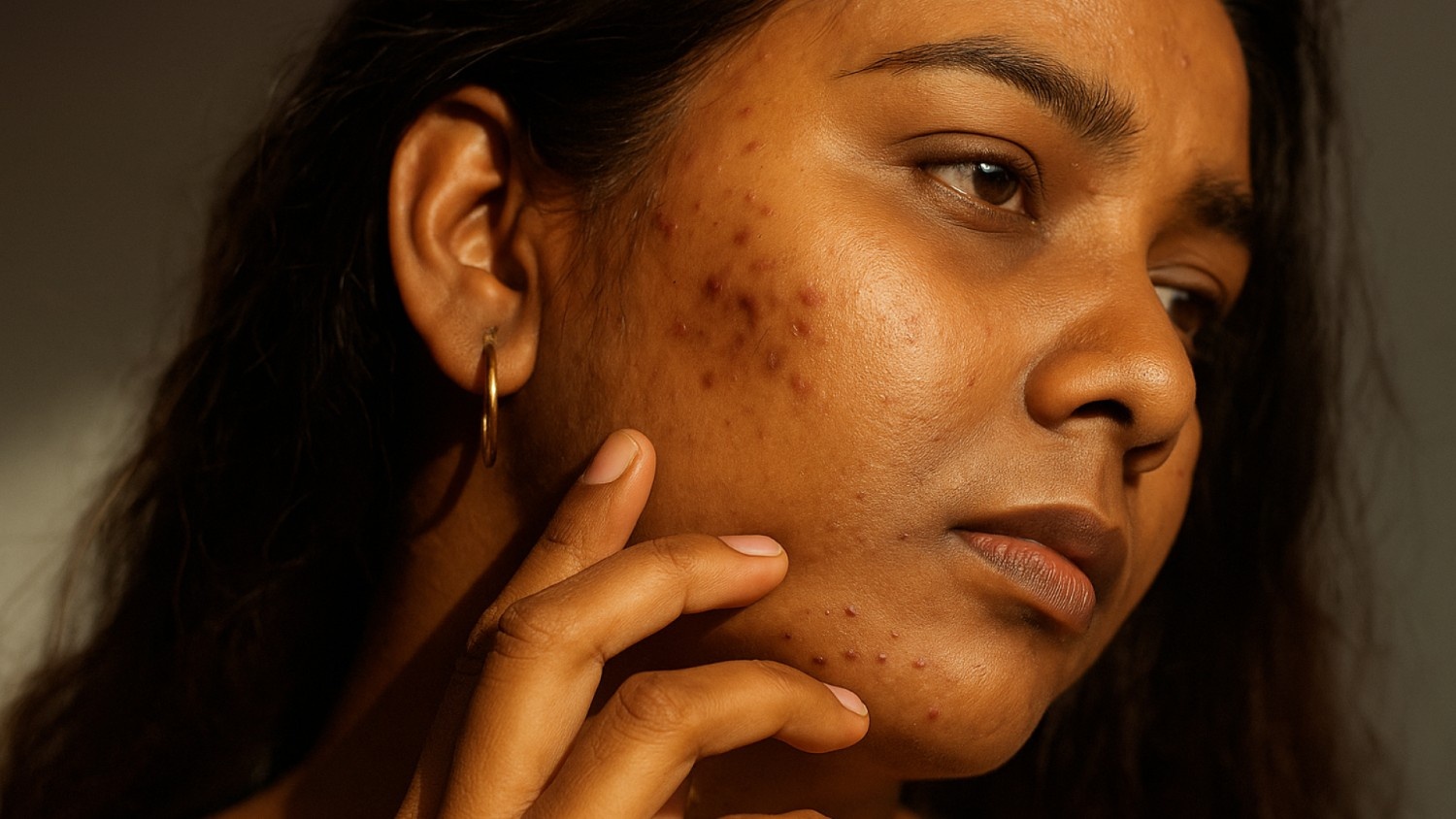Living with psoriasis goes far beyond managing visible symptoms. For many, it’s a daily challenge that affects both physical comfort and emotional well-being.
In fact, when asked to rate the emotional impact of psoriasis or psoriatic arthritis on a scale of 1 to 10, patients gave an average score of 8.1. Around 72% reported that the condition significantly affected their overall emotional health, while just 5% said it had little to no impact.
With that level of burden, seeking effective, evidence-based treatment becomes more than a medical need; it becomes a path to restoring quality of life. One such option is laser treatment for psoriasis, also known as light therapy or phototherapy.
In this blog, we’ll cover what light therapy is, how it works for psoriasis, its types, benefits, and risks. You’ll also learn who it's suitable for, what to expect during treatment, how it compares to other options, and the costs.
Overview
- Laser therapy targets psoriasis plaques using focused UVB light, especially helpful for localised or stubborn patches.
- Treatment usually requires multiple sessions per week for several weeks to achieve noticeable improvement.
- Consistency, sun protection, and combining with topical treatments can significantly enhance results.
- The procedure is safe under medical supervision, but not a cure; ongoing care may be needed.
- Always follow your dermatologist’s guidance and disclose any medical conditions or reactions during treatment.
- Velantis Dermatology offers doctor-led precision care. Every session is handled by an MD Dermatologist, ensuring safety and medically sound outcomes.
What Is Laser Treatment for Psoriasis?
Laser treatment for psoriasis is a medically approved light-based therapy that uses concentrated beams to target and manage plaque build-up and inflammation in affected skin areas. It is particularly effective for mild to moderate cases and is often recommended when topical treatments do not provide sufficient relief..
Types of Laser Treatment for Psoriasis
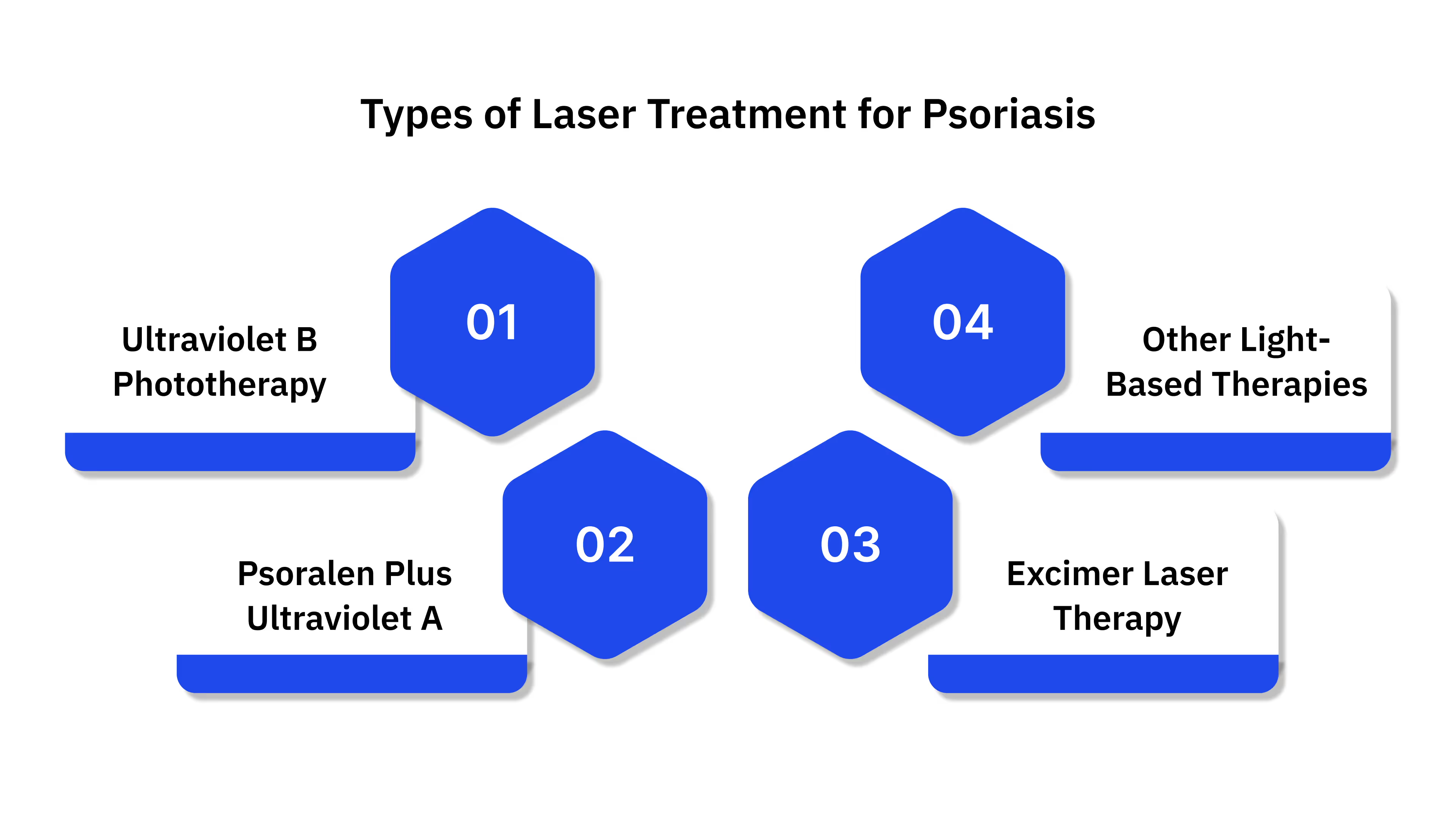
Choosing the right type of laser treatment depends on your skin condition, the severity of symptoms, and your previous treatment history. Below are the main types used in psoriasis care.
1. Ultraviolet B (UVB) Phototherapy
This is the most widely used form of light therapy for psoriasis and is often the first-line option for many patients.
Narrowband UVB (NB-UVB):
- Most commonly used light therapy for psoriasis.
- Uses a specific wavelength (311–313 nm) that targets plaque and guttate psoriasis.
- Typically done 2-3 times a week under a dermatologist's supervision.
- Often combined with topical treatments for better results.
Broadband UVB (BB-UVB):
- An older form that uses a wider range of UVB light.
- Less effective than NB-UVB and may cause more side effects.
- Still used in some cases if NB-UVB is unavailable.
2. Psoralen Plus Ultraviolet A (PUVA)
PUVA combines medication and UVA light to treat more severe or widespread cases of psoriasis.
- Involves taking a medication called psoralen to make the skin more sensitive to UVA light.
- Used for stubborn or widespread psoriasis not responding to other options.
- Requires close medical monitoring due to long-term risks (like skin ageing and increased cancer risk).
3. Excimer Laser Therapy
This targeted laser treatment is ideal for small, resistant plaques and hard-to-reach areas.
- Uses a focused UVB beam (usually at 308 nm) to treat only the affected skin.
- Helps avoid exposure to surrounding healthy skin.
- Effective for areas like the scalp, elbows, or knees.
- May offer quicker results in fewer sessions.
4. Other Light-Based Therapies
These methods are less common but may be considered for specific types of psoriasis or when standard options are not suitable.
Pulsed Dye Laser (PDL):
- Often used for nail psoriasis or small, stubborn patches;
- Works by targeting blood vessels under the skin to reduce inflammation.
Photodynamic Therapy (PDT):
- Combines a light-activated medication with a light source.
- Occasionally used for some forms of psoriasis.
Low-Level Light Therapy (LLLT):
- Uses low-intensity red or blue light.
- Still under research, but it may help reduce inflammation and support cell regulation.
Struggling to find what truly works for your psoriasis? At Velantis Dermatology, every session is guided by medical expertise and personalised care. With advanced skin mapping, phototype analysis, treatment depth planning, and safety parameter setting, your laser treatment is backed by precision at every step. Schedule your consultation now.
How Laser Treatment Works on Psoriasis?
Laser treatment is a well-researched medical treatment that uses specific types of light to improve psoriasis symptoms. It works by gently calming the processes in your skin that cause patches, redness, and itching. Here’s how it helps:
1. Slows Down Fast Skin Cell Growth
In psoriasis, skin cells grow too quickly and build up on the surface, forming thick, scaly patches. UVB light helps slow this down, giving your skin time to heal and look more even.
2. Reduces Inflammation
Psoriasis is linked to an overactive immune response. Light therapy lowers inflammation by calming certain immune signals in the skin. This helps reduce redness, swelling, and discomfort.
3. Calms the Overactive Immune Response
In psoriasis, certain immune cells like T cells and Langerhans cells stay too active in the skin, keeping inflammation going. Light therapy helps reduce their activity or safely remove them, which brings the immune system back into balance and helps prevent flare-ups.
4. Treats Only the Affected Areas
With devices like the excimer laser, light can be targeted directly at psoriasis patches without touching healthy skin. This helps avoid side effects and improves results in small, stubborn areas.
5. Supports Natural Healing
Low-level light treatments (such as red or blue light) may help skin cells repair themselves. They support cell function and reduce stress inside the cells, which may aid in long-term healing.
6. Improves Skin Over Time
By calming inflammation, slowing cell growth, and supporting healing, light therapy can help clear psoriasis patches and reduce how often they return. Many people see a gradual but noticeable improvement with consistent treatment.
Who Is a Good Candidate for Laser Treatment?
Not everyone with psoriasis is automatically suited for light therapy. Below are the key factors that help determine if this treatment may be appropriate for you:
- Moderate to Severe Psoriasis: If topical creams haven’t helped enough and plaques are still visible, light therapy may offer better control and longer-lasting relief.
- Widespread or Resistant Plaques: Ideal for people with large areas of psoriasis or stubborn patches that don’t respond well to standard topical treatments.
- Suitable Skin Type for UVB: Patients with skin types that can tolerate narrowband UVB light often respond well with minimal risk of long-term skin damage.
- No History of Skin Cancer: Phototherapy is not advised for those with a personal or family history of skin cancer due to UV exposure risks.
- Not on Light-Sensitising Medications: Some medicines increase sensitivity to light. Light therapy is safer when you're not taking such drugs or they're medically managed.
- No UV-Sensitive Health Conditions: People with conditions worsened by UV exposure, like lupus or porphyria, are not suitable for light-based treatments.
- Can Attend Regular Sessions: Treatment usually requires 2–3 sessions per week. Commitment to this schedule is important to see safe and effective results.
What to Expect During a Laser Treatment Session?

Before beginning laser treatment for skin conditions like psoriasis, it's important to understand the process involved. The following are the steps typically involved:
Step 1: Arrival and Preparation
Before the treatment begins, you’ll be guided through the necessary steps to get ready for the session.
- Check-In Process: You’ll check in at reception and may be asked to wear UV-protective goggles during the session.
- Changing into Appropriate Clothing: A gown or loose clothing may be provided to allow full exposure of the affected skin areas.
Step 2: Skin Assessment
Your skin will be reviewed before every session to ensure that the light dosage is safe and suitable.
- Clinical Skin Check: A trained nurse or practitioner will examine your skin’s condition and record any changes since the last visit.
- Removing Products: You may be asked to wash off lotions, perfumes, or creams to prevent interference with the light treatment.
Step 3: Safety Precautions
Protective measures are taken to minimise risks and ensure your safety during the session.
- Eye Protection: Special goggles or tightly closed eyes will help shield your eyes from UV exposure.
- Covering Sensitive Areas: Protective items may be used to cover genital or untreated facial areas during the procedure.
Step 4: Positioning for Treatment
You’ll be positioned carefully to ensure that light reaches the skin areas being treated.
- Using the Light Box: You may be asked to stand inside or lie in a full-body UVB unit, depending on your treatment plan.
- Adjusting for Coverage: For hard-to-reach spots like lower legs, a small step or platform may be used to improve light exposure.
Step 5: Controlled Light Exposure
The actual light treatment is brief and closely monitored to maintain skin safety.
- Short, Controlled Sessions: Light is administered for seconds to a few minutes, depending on your skin type and treatment dose.
- Supervised Monitoring: A healthcare professional monitors the session to avoid overexposure or skin reactions.
Step 6: Post-Treatment Care
Once the light exposure is complete, you’ll be guided on how to care for your skin afterwards.
- Moisturising Support: The nurse may assist with moisturising harder-to-reach areas to maintain skin hydration.
- Dressing and Advice: You can get dressed and will receive simple guidance on what to expect after the session.
Step 7: Follow-Up and Scheduling
Regular follow-up is essential for progress and long-term results.
- Frequency of Sessions: Most treatment plans involve two to three sessions per week, based on clinical recommendation.
- Tracking Skin Response: Your skin’s progress will be reviewed regularly, and light doses may be adjusted as needed.
Tired of trying treatments that don’t last? At Velantis Dermatology, your skin isn’t treated with a one-size-fits-all approach. Every laser session is thoughtfully customised, from the right wavelengths to post-care support, to suit your skin type and healing journey. Book your personalised session today.
Potential Side Effects of Laser Treatment for Psoriasis
Laser treatment can be an effective option for managing psoriasis, but like any medical procedure, it comes with potential side effects. Being informed helps you make safe, confident decisions in consultation with your dermatologist.
- Mild Skin Redness: It’s common to experience temporary redness in the treated area. This usually settles within a few hours to a couple of days.
- Dryness or Peeling: Laser sessions may cause the skin to feel dry or start peeling. A dermatologist may recommend a moisturiser to manage this response.
- Slight Itching or Warm Sensation: Some patients report a mild stinging or warmth during or after treatment. These symptoms are typically short-lived and manageable.
- Temporary Pigment Changes: In some cases, the treated area may appear lighter or darker than your natural skin tone. These changes are usually temporary and fade over time.
- Blistering or Crusting (Rare): Although uncommon, blisters or crusting may occur, especially if aftercare instructions are not followed properly. Immediate medical attention is advised in such cases.
- Increased Sensitivity to Sunlight: Laser-treated skin may become more sensitive to sunlight. Using a prescribed sunscreen and avoiding direct exposure is essential post-treatment.
Cost of Laser Treatment for Psoriasis in Chennai
Laser treatment for psoriasis typically ranges from ₹1,000 to ₹2,500 per session. The total cost depends on how many sessions you require, which is usually determined by the severity and coverage of the affected skin. On average, you may need around 4 to 10 sessions to see visible results.
Factors That Influence Pricing
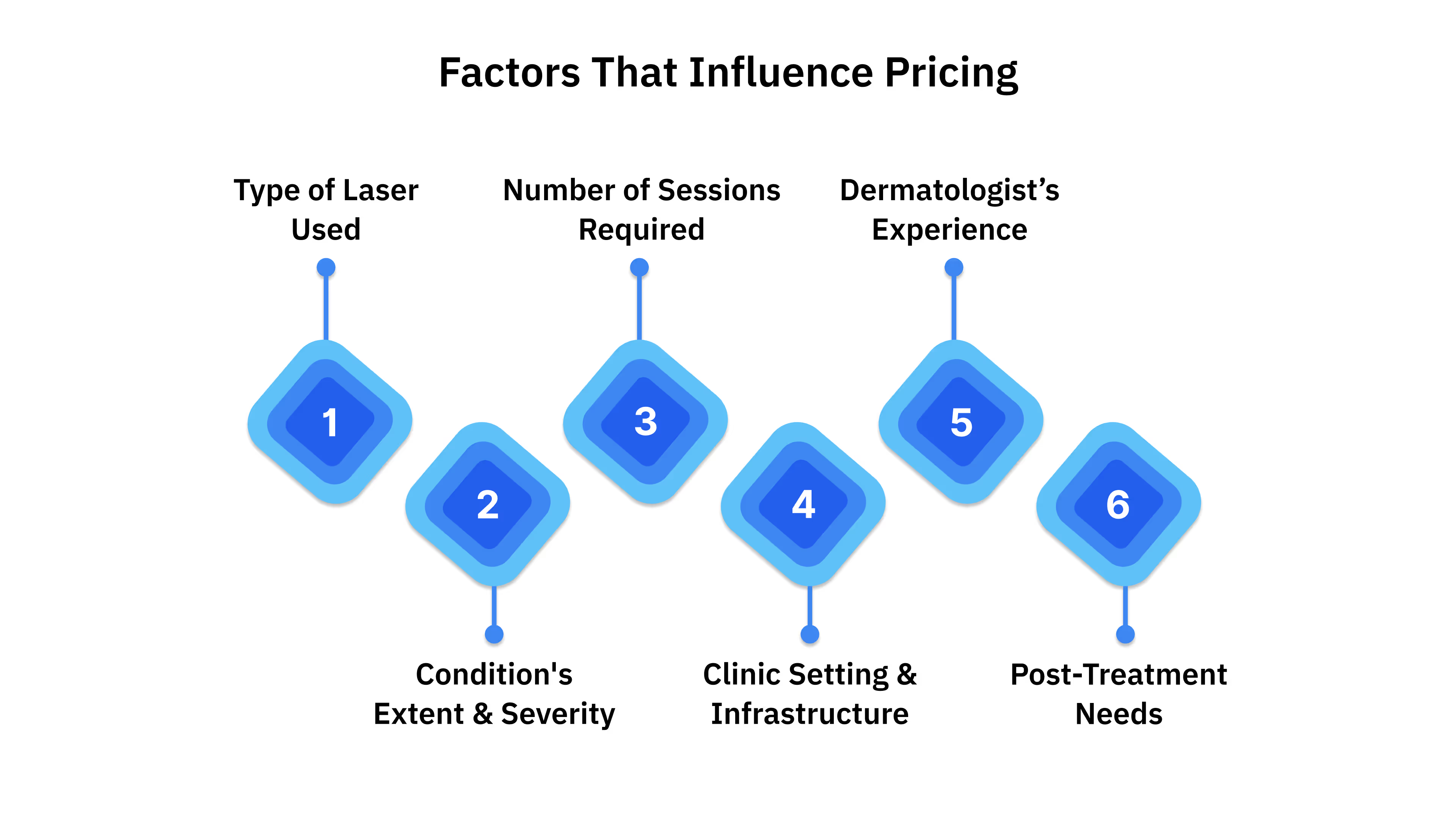
Several factors can influence the overall cost of your treatment:
- Type of Laser Used: Technologies such as Excimer or Pulsed Dye Lasers differ in how they target psoriasis plaques. More advanced systems may come with higher session costs due to their precision and effectiveness.
- Extent and Severity of the Condition: If larger areas of skin are involved, or if the condition is more persistent, sessions may take longer or be more frequent, leading to increased costs.
- Number of Sessions Required: Your treatment plan will be tailored based on how your skin responds to therapy. More sessions will naturally affect the final cost.
- Clinic Setting and Infrastructure: Centres with advanced equipment and robust clinical protocols may charge higher fees, reflecting their commitment to quality care and safe practices.
- Dermatologist’s Experience: Specialists with significant expertise in managing psoriasis using laser therapy may charge more due to their advanced training and patient outcomes.
- Post-Treatment Needs: Some patients may require follow-up care or topical medications as part of their ongoing management, which can add to the overall cost.
Conclusion
Laser treatment offers a clinically proven and medically supervised approach for managing psoriasis, especially when traditional treatments don’t provide sufficient relief. However, choosing the right centre for your treatment is just as important as the technology itself.
At Velantis Dermatology, every procedure is conducted by a certified MD Dermatologist, ensuring each session is tailored to your medical needs, not commercial promises. From fractional laser resurfacing and IPL photofacials to CO₂ laser and vascular treatments, Velantis provides advanced, evidence-based solutions with a strong focus on patient safety and long-term skin health.
Consult with Dr. Janani Sree C M for a personalised and ethical assessment of your psoriasis treatment options.
FAQs
Q1. How many laser treatment sessions will I need for psoriasis?
A1. Most treatment plans involve around 4 to 10 sessions spread across a few weeks. The number may vary depending on the thickness of your plaques and how your skin responds. Some people may also need maintenance sessions later.
Q2. Is laser therapy safe?
A2. Laser treatment is considered safe when carried out under medical supervision. Mild side effects like redness, itching, or pigmentation changes can occur, but serious issues are uncommon. Your dermatologist will guide you through the process and monitor your skin closely.
Q3. How soon will I notice the results?
A3. You may need several sessions before seeing visible improvements. Many people start noticing less redness and scaling within a few weeks, and the benefits can often last for several months.
Q4. Can this treatment cure my psoriasis?
A4. Laser therapy helps manage and reduce plaques, but it does not cure psoriasis. Since it’s a long-term condition, ongoing treatment is sometimes necessary as new plaques can appear over time.
Q5. Who should avoid laser treatment?
A5. Laser therapy isn’t suitable for everyone. If you have a history of skin cancer, lupus, or other conditions causing light sensitivity, this treatment may not be right for you. Your doctor will review your medical history before recommending it.
Q6. How does laser treatment compare to other options?
A6. The excimer laser treats small, stubborn patches with precision, affecting only the targeted area. It usually requires fewer sessions than standard light therapy. However, it’s not ideal for widespread psoriasis, where systemic or topical treatments may be more effective.
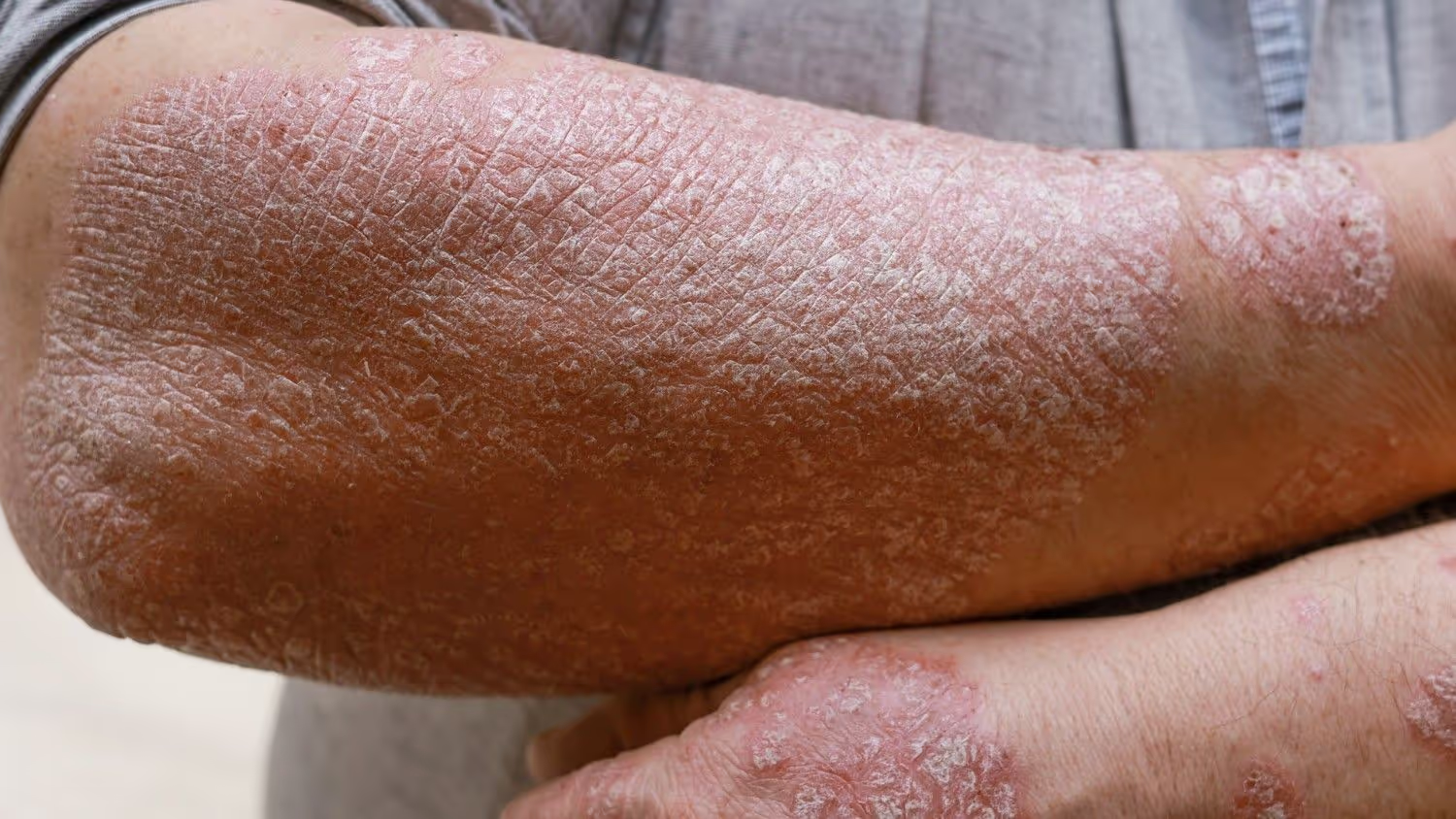

.png)
